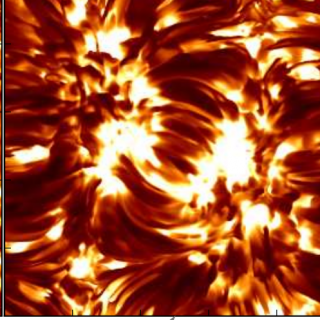Bibcode
del Pino Alemán, T.; Manso Sainz, R.; Trujillo Bueno, J.
Referencia bibliográfica
The Astrophysical Journal, Volume 784, Issue 1, article id. 46, 10 pp. (2014).
Fecha de publicación:
3
2014
Revista
Número de citas
7
Número de citas referidas
4
Descripción
Line scattering polarization can be strongly affected by Rayleigh
scattering at neutral hydrogen and Thomson scattering at free electrons.
Often a depolarization of the continuum results, but the Doppler
redistribution produced by the continuum scatterers, which are light
(hence, fast), induces more complex interactions between the
polarization in spectral lines and in the continuum. Here we formulate
and solve the radiative transfer problem of scattering line polarization
with non-coherent continuum scattering consistently. The problem is
formulated within the spherical tensor representation of atomic and
light polarization. The numerical method of solution is a generalization
of the Accelerated Lambda Iteration that is applied to both the atomic
system and the radiation field. We show that the redistribution of the
spectral line radiation due to the non-coherence of the continuum
scattering may modify the shape of the emergent fractional linear
polarization patterns significantly, even yielding polarization signals
above the continuum level in intrinsically unpolarizable lines.
Proyectos relacionados

Magnetismo, Polarización y Transferencia Radiativa en Astrofísica
Los campos magnéticos están presentes en todos los plasmas astrofísicos y controlan la mayor parte de la variabilidad que se observa en el Universo a escalas temporales intermedias. Se encuentran en estrellas, a lo largo de todo el diagrama de Hertzsprung-Russell, en galaxias, e incluso quizás en el medio intergaláctico. La polarización de la luz
Ernest
Alsina Ballester